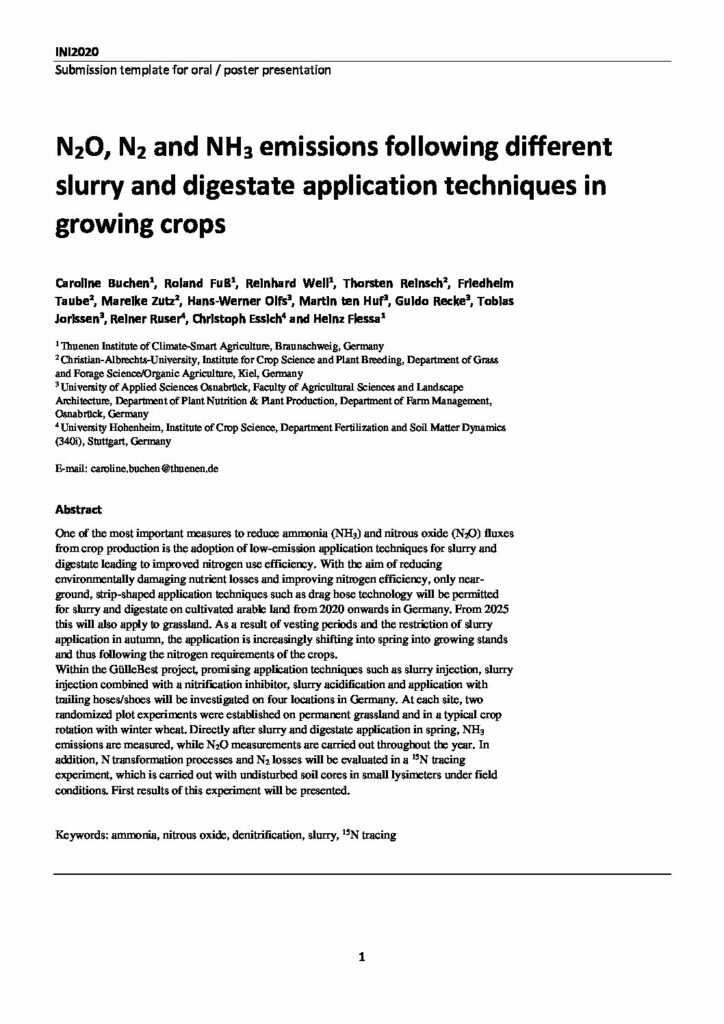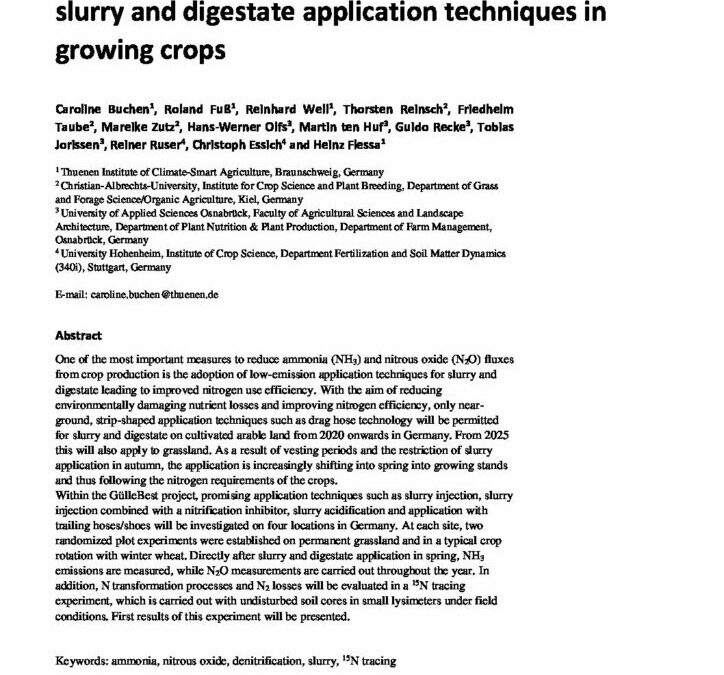N2O, N2 and NH3 emissions following different slurry and digestate application techniques in growing crops

One of the most important measures to reduce ammonia (NH3) and nitrous oxide (N2O) fluxes from crop production is the adoption of low-emission application techniques for slurry and digestate leading to improved nitrogen use efficiency. With the aim of reducing environmentally damaging nutrient losses and improving nitrogen efficiency, only nearground, strip-shaped application techniques such as drag hose technology will be permitted for slurry and digestate on cultivated arable land from 2020 onwards in Germany. From 2025 this will also apply to grassland.
As a result of vesting periods and the restriction of slurry application in autumn, the application is increasingly shifting into spring into growing stands and thus following the nitrogen requirements of the crops. Within the GülleBest project, promising application techniques such as slurry injection, slurry injection combined with a nitrification inhibitor, slurry acidification and application with trailing hoses/shoes will be investigated on four locations in Germany. At each site, two randomized plot experiments were established on permanent grassland and in a typical crop rotation with winter wheat. Directly after slurry and digestate application in spring, NH3 emissions are measured, while N2O measurements are carried out throughout the year. In addition, N transformation processes and N2 losses will be evaluated in a 15N tracing experiment, which is carried out with undisturbed soil cores in small lysimeters under field conditions. First results of this experiment will be presented.
